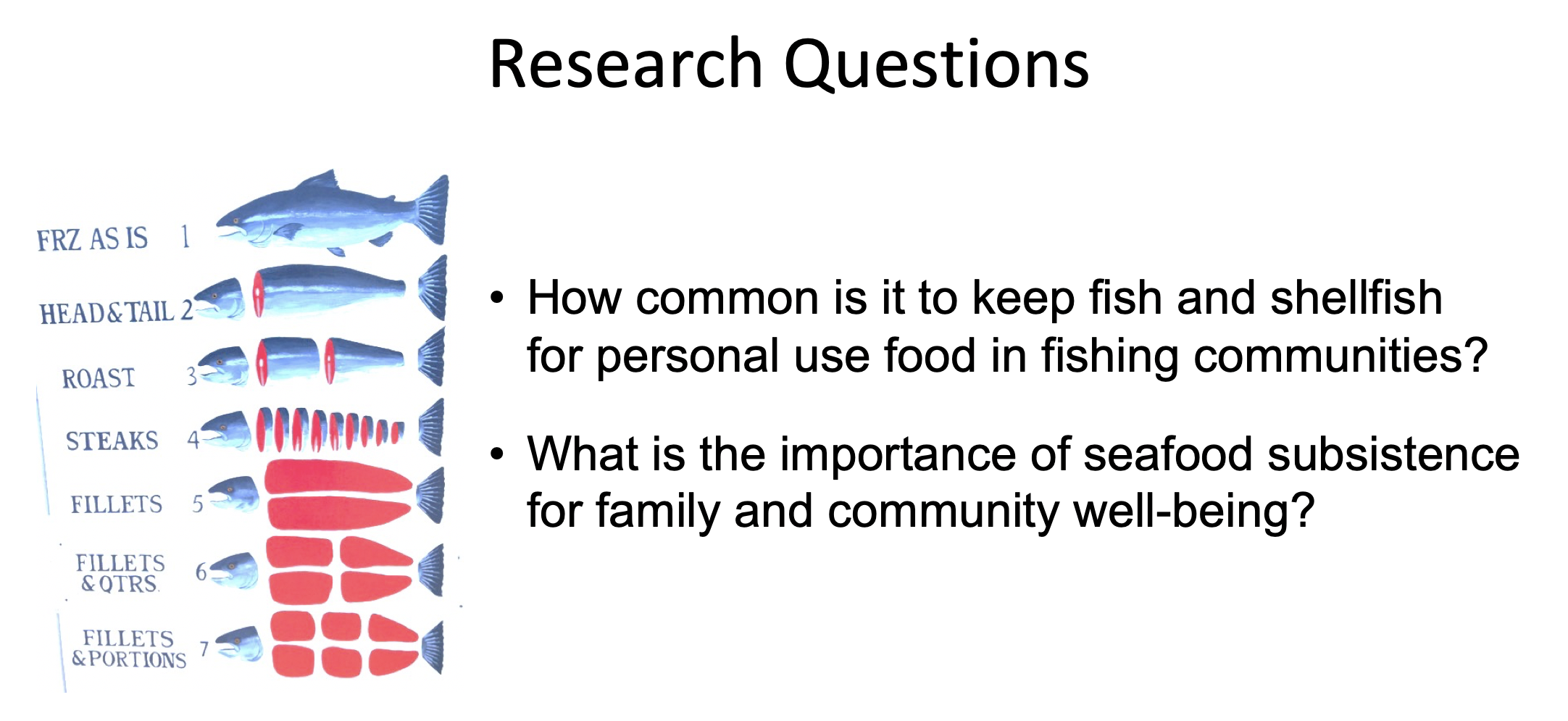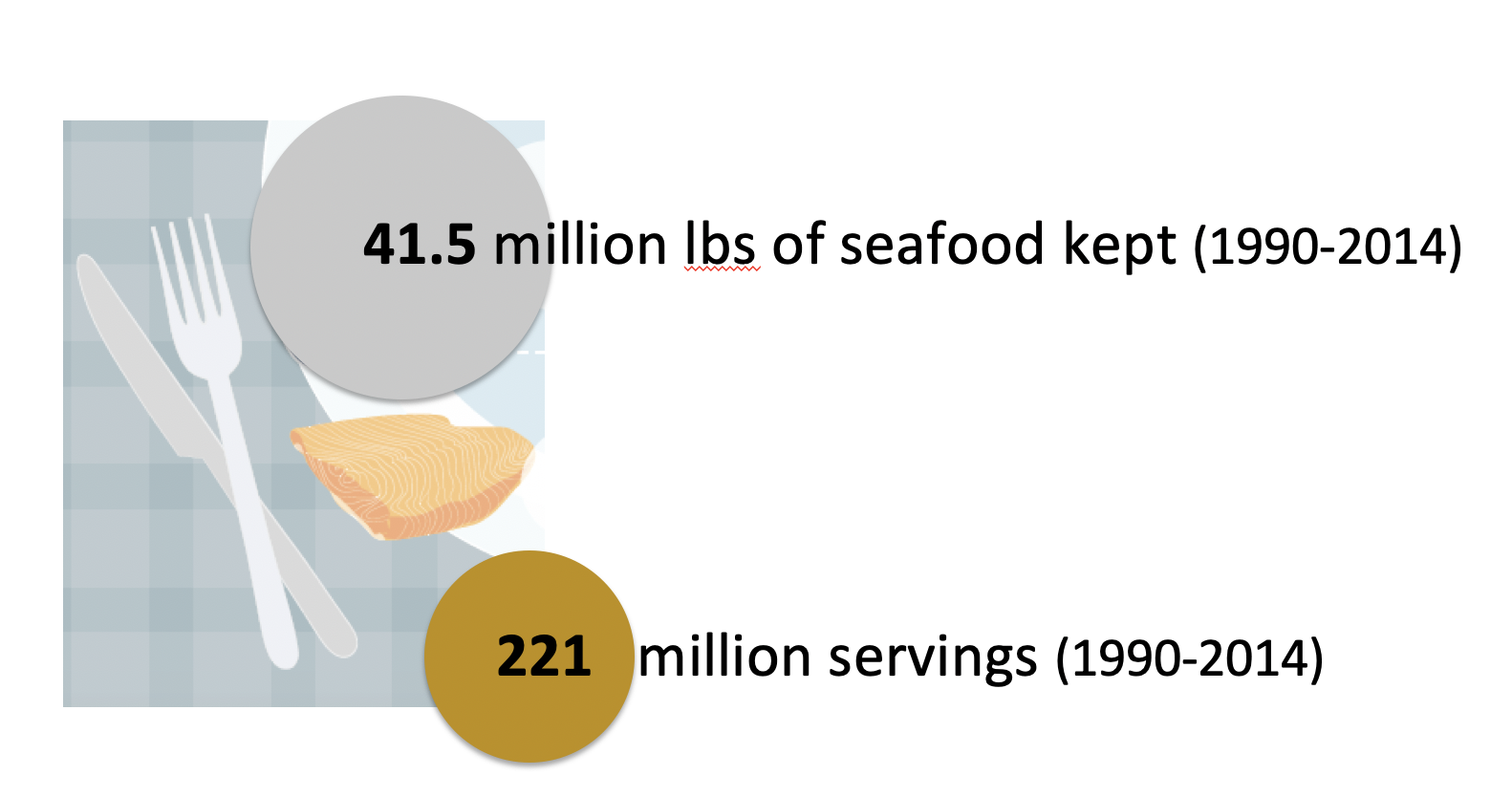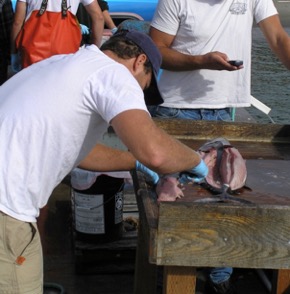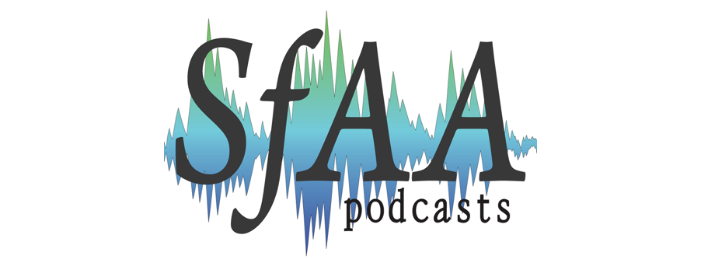Rethinking Subsistence Podcast
Washington Sea Grant social scientist, Melissa Poe, presented work from West Coast fishing communities on “Sustaining the Subsistence Value and Cultural Seafood Practices Associated with Commercial Fisheries”
SfAA 2019 Podcast: Melissa Poe
Subsistence Values of West Coast Fisheries

The concept and practice of “subsistence” is legally and narrowly defined in some places, such as Alaska, but elsewhere lacks a clear definition. Poe uses a definition of subsistence simply as: the “practice of harvesting species for food rather than catching for sale and income generation” and provides a couple of key points about what is and isn’t included in a theory of subsistence.
- Harvesting species for food rather than for sale and income generation
- A strategy used to meet or supplement personal and family-level household food security
- Seldom the exclusive approach to procuring household food needs, nor an exclusive livelihood mode –a common misunderstanding
- Often distributed within communities through sharing, gifting, and bartering
- Linked to diverse cultural food traditions and ceremonial uses –Indigenous and non-indigenous
- Builds and maintains local environmental knowledge and social ties
Producing healthy food is ranked as one of the top 3 most satisfying aspects of participating in commercial fishing for the West Coast. In a survey to over 1,400 permit holders in Washington, Oregon and California, nearly 70% report keeping fish for personal use, a proxy for subsistence. Since 1990, the amount retained for personal use yielded enough for 221 million servings of seafood for fishing families (ref: Pacific Fisheries Information Network).

“I love eating all kinds of seafood. I just thawed out some halibut because I realized in another month we’re going to be able to catch a few halibut so I should probably finish off what’s in the freezer. Because it freezes really good, California halibut does. And salmon, if you vacuum bag it. … I just had some a couple days ago. It was fabulous. I eat the black cod and rockfish. Love it!”


“So these guys went around town and basically fed the town with the gillnet that they hand pulled. When they left I bought their outboard motor and their gillnet. So I started feeding the town. It felt good then and it feels good now. I have a hard time feeding the town now because I’m restricted to my number of fisheries. I can’t gillnet anymore. The rockfish thing is closed. The salmon is almost non-existent. So, I’ve seen a lot of fisheries come and go.”

And to supply fish for special occasions:
“We had a Memorial Day barbecue with [two salmon]. We had family over and everything. We’ve got what three grandkids now and a son and daughter that live close by, so that was pretty nice. Then, in the winter we get crab, and then we get the lingcod or whatever fish that goes in the trap, you know?”
And trade for other wild foods:
”I make sure I have clams in the freezer because I got seniors, friends of my mom and dad’s, older people that can’t dig anymore, so I’ll go by and say hi and go, “Yeah, I have some clams for you.” […] Same thing with halibut and fish. I come home with 100 to 150 pounds of fish. […] For me, personally, I make sure I have lots of clams and have fish in my freezer, so I can trade them. I don’t elk hunt anymore or deer hunt, so I’ll trade. “You got any fish?” “No. I got halibut. You want to trade me some elk meat?”

To read more, check out this publication:
Poe, M.R., Levin, P.S., Tolimieri, N. and Norman, K., 2015. Subsistence fishing in a 21st century capitalist society: From commodity to gift. Ecological Economics, 116, pp.241-250.
Berkes, F. (1990). Native subsistence fisheries: a synthesis of harvest studies in Canada. Arctic, 35-42.
Schumann, S., & Macinko, S. (2007). Subsistence in coastal fisheries policy: What’s in a word?. Marine policy, 31(6), 706-718.




